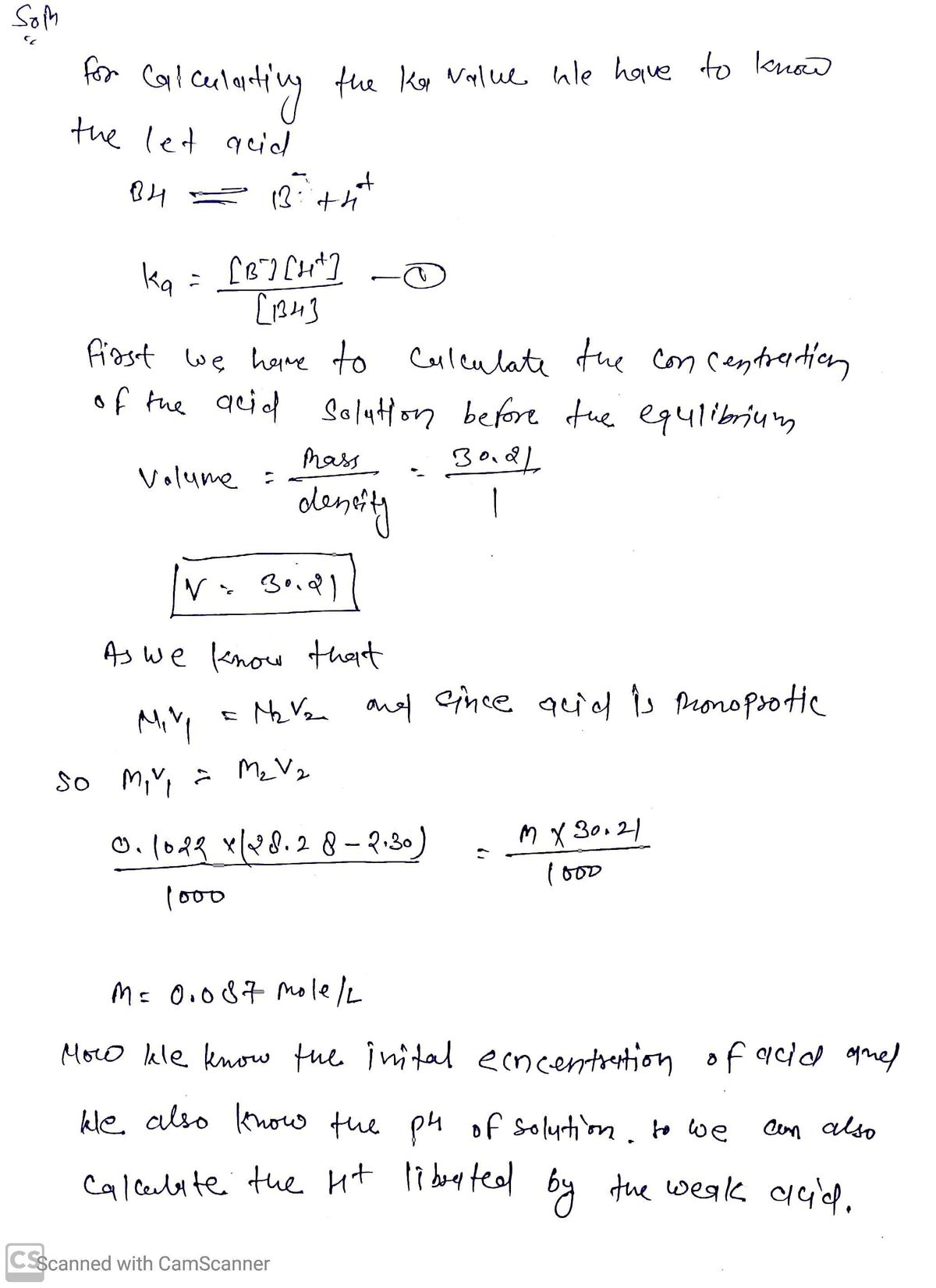For trial analyzing a different unknown weak, monoprotic acid, the following data was obtained. Trial 1 Concentration of standardized NAOH titrant 0.1022 mole/L Mass concentration of unknown acid solution 9.55 g/L Measured pH of the unknown acid solution 1.62 Mass of the unknown acid solution 30.21 Initial buret reading 2.30 of NaOH(aq) titrant mL
Ionic Equilibrium
Chemical equilibrium and ionic equilibrium are two major concepts in chemistry. Ionic equilibrium deals with the equilibrium involved in an ionization process while chemical equilibrium deals with the equilibrium during a chemical change. Ionic equilibrium is established between the ions and unionized species in a system. Understanding the concept of ionic equilibrium is very important to answer the questions related to certain chemical reactions in chemistry.
Arrhenius Acid
Arrhenius acid act as a good electrolyte as it dissociates to its respective ions in the aqueous solutions. Keeping it similar to the general acid properties, Arrhenius acid also neutralizes bases and turns litmus paper into red.
Bronsted Lowry Base In Inorganic Chemistry
Bronsted-Lowry base in inorganic chemistry is any chemical substance that can accept a proton from the other chemical substance it is reacting with.
Solve CARFULLY!!!!


Step by step
Solved in 2 steps with 2 images









